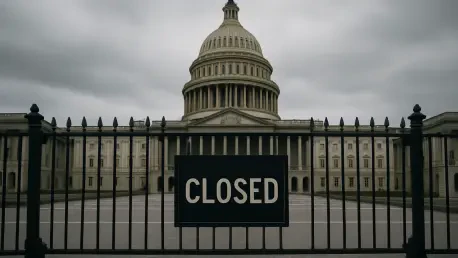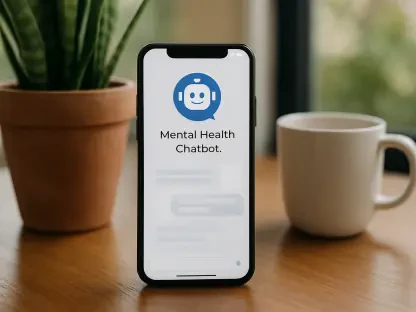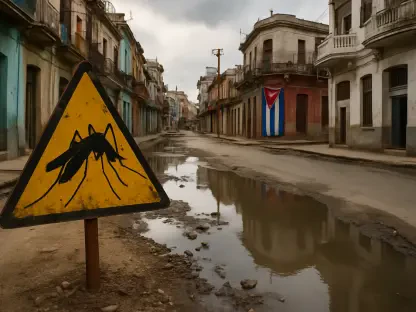I’m thrilled to sit down with James Maitland, a renowned expert in healthcare policy and administration with a deep focus on Medicare, Medicaid, and telehealth regulations. With years of experience navigating the complexities of healthcare systems and a keen understanding of how policy shifts impact patients and providers alike, James offers invaluable insights into the current landscape. Today, we’ll explore the ramifications of the recent government shutdown on healthcare operations, particularly the rollback of telehealth flexibilities for Medicare beneficiaries, the operational challenges faced by the Department of Health and Human Services, and the broader implications for patient access and provider sustainability. Let’s dive into this critical conversation.
Can you walk us through the key telehealth flexibilities for Medicare beneficiaries that were introduced during the pandemic and have now lapsed due to the government shutdown?
Certainly. During the pandemic, CMS expanded telehealth access significantly to ensure continuity of care while minimizing in-person contact. This included allowing telehealth services regardless of a patient’s geographic location—urban or rural—and covering audio-only visits for those without video capabilities. Additionally, a broader range of practitioners, like occupational and physical therapists, were permitted to provide telehealth services. As of the shutdown, these flexibilities have ended, reverting to pre-pandemic rules. Now, patients generally need to be in a rural health clinic or hospital for telehealth visits, audio-only options are no longer covered, and certain providers are excluded from offering these services under Medicare.
How has CMS responded to this lapse in telehealth coverage, and what specific measures have they put in place to manage the transition?
CMS has been proactive in communicating the changes through guidance like the Medicare Learning Network Connects Newsletter. One significant step they’ve taken is directing Medicare Administrative Contractors to implement a temporary hold on telehealth claims for 10 business days starting October 1. This hold, which delays processing until mid-October, is designed to prevent the need for reprocessing claims if Congress reinstates the flexibilities. They’ve also advised providers to consider issuing an Advance Beneficiary Notice of Noncoverage to patients, informing them that Medicare may not cover certain telehealth services, and to potentially hold off on submitting claims until there’s clarity from Congress.
What are the real-world impacts of this telehealth policy rollback on Medicare patients, especially those who have come to rely on virtual care?
The impact on patients is substantial. Many Medicare beneficiaries, particularly older adults or those with mobility issues, have grown accustomed to accessing care from home over the past few years. With the loss of coverage for telehealth outside rural settings and the elimination of audio-only visits, patients now face barriers to care. They might need to travel long distances to rural clinics or hospitals for a telehealth appointment, which isn’t feasible for everyone. Vulnerable populations, like those with chronic conditions or limited tech access, are hit hardest, as they lose a convenient lifeline to their providers, potentially leading to delayed or forgone care.
How are healthcare providers navigating these sudden changes, and what challenges or risks do they face in continuing telehealth services during this period?
Providers are in a tough spot. Many are taking calculated risks by continuing to offer telehealth services, hoping for retroactive reimbursement if Congress acts to restore the flexibilities. However, they face financial uncertainty since claims submitted during the hold won’t be paid immediately, and there’s no guarantee of coverage. There’s also the administrative burden of issuing notices to patients about potential noncoverage and deciding whether to hold claims. For smaller practices or those heavily reliant on telehealth revenue, this creates a cash flow crunch and could force tough decisions about whether to scale back services or absorb the costs.
Shifting to the broader effects of the shutdown, can you explain how the Department of Health and Human Services is managing operations with such a significant portion of staff furloughed?
The Department of Health and Human Services is operating under a contingency plan that furloughs about 41% of its workforce, roughly 32,000 employees. However, critical functions like Medicare and Medicaid payments, direct medical services through the National Institutes of Health and Indian Health Services, and emergency preparedness for outbreaks or disasters are continuing. Some agencies within HHS have access to mandatory or user fee funds, allowing over 35,000 staff to keep working. That said, there are disruptions—public communications from the CDC are interrupted, and administrative delays are expected due to reduced staffing, even if core payment systems remain operational for now.
How do you see these operational challenges at HHS and CMS affecting the long-term trust and reliability of federal healthcare programs among patients and providers?
These disruptions can erode trust significantly. When patients experience sudden losses in coverage, like with telehealth, or face delays in other services due to staffing shortages, they start questioning the dependability of federal programs. Providers, too, grow frustrated when they’re left in limbo over reimbursement or face added administrative hurdles. Over time, repeated shutdowns or policy rollbacks can create a perception that the system is unstable, which might discourage participation in programs like Medicare or push providers toward private payer models. Restoring confidence will require consistent policy and clear communication from leadership.
What has been the reaction from healthcare advocacy groups to the telehealth lapse and the broader shutdown’s impact on care delivery?
Advocacy groups have been vocal about their concerns. The Alliance for Connected Care, for instance, has praised CMS for the temporary claims hold as a way to ease administrative burdens, though they acknowledge it doesn’t solve patient access issues. Groups like ATA Action and the American Telemedicine Association have been more critical, highlighting that millions of Medicare patients are waking up without telehealth coverage for the first time in years, calling it a regression in healthcare delivery. Broader stakeholders, including nurses’ unions and physician organizations, have also urged Congress to resolve the shutdown swiftly, emphasizing the human cost of delayed care and disrupted services.
Looking ahead, what is your forecast for the future of telehealth access under Medicare if the government shutdown persists or if Congress fails to act on these flexibilities?
If the shutdown drags on or Congress doesn’t reinstate these telehealth flexibilities, I foresee a deepening access crisis for Medicare beneficiaries. We’ll likely see a widening gap in care, especially for rural and underserved populations who’ve benefited most from virtual options. Providers might scale back telehealth offerings due to financial risks, further limiting access. Long-term, this could stall the momentum telehealth gained during the pandemic, undermining its potential to transform healthcare delivery. I’m hopeful, though, that bipartisan recognition of telehealth’s value will push for a resolution, but without swift action, we’re looking at a significant setback for patient-centered care.









